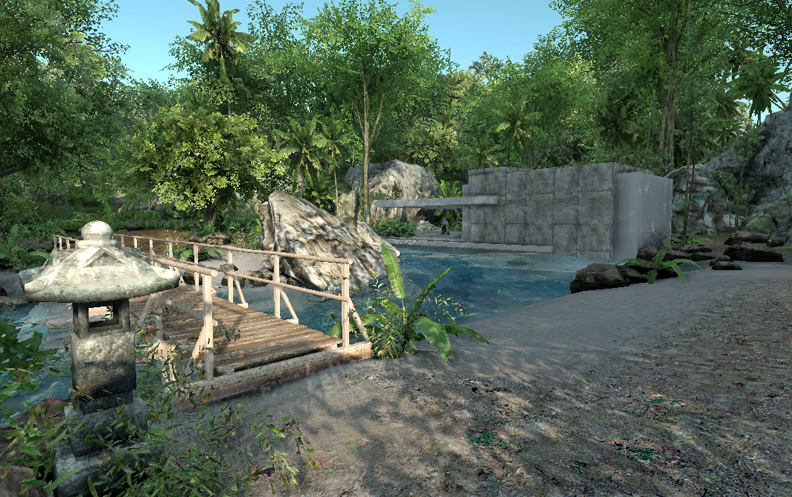Self-Help: The process of Architectural Design and what it entails…
Certificate of Occupancy:
A Certificate of Occupancy or C of O will tell you what is legally allowed within a structure. It is required by law and can be updated
once a renovation or new structure is completed. It acknowledges that people are safe to occupy a structure.
Violations:
Violations are issued by the Department of Buildings when some item is considered illegal. These violations can be
cleared up by correcting the problem and getting the appropriate inspection.
Survey:
We use Boro Land Survey (718) 624-2676. A survey will show the location of the lot, dimensions of the lot, built structures on a lot.
A survey will also provide the correct address, block and lot numbers necessary for an application for a building permit. A survey
can be a very important ingrediant when planning and doing zoning calculations.
Zoning for New Yrok City Department of Buildings (NYCDOB).
There are 3 main districts, R for Residential, C for Commercial and M for Manufacturing District. There are combinations and levels to each district. The zoning maps indicate which zone a paticular site is situated in. Once this information is retrieved, then it is further defined within the resolution including allowable height, setback requirements, signage, allowable uses, floor area ration (FAR, i.e., allowable floor area in relationship to open space), and so on. There are 3 large blue volumns associated with the New York CIty Zoning Resolution. One volumn has the zoning maps while the other two contain the zoning resolution. They are available at the City Planning Bookstore, Department of City Planning, City of New York, 22 Reade Street (212) 720-3667. Also included is a 'membership' which supplies quarterly updates.
Codes for New Yrok City Department of Buildings (NYCDOB).
Permits for New Yrok City Department of Buildings (NYCDOB).
Must have Architect’s, Owner’s and Contractor’s Signature. Contractor must provide proof of insurance for disability and
workman’s compensation. Must know if gas is metered seperately(for each unit) or one for the building. Plumber and
Electrician to get required permits and inspections based on Owners permit number issued with building permit. Must have lot
location which is available at the city’s tax lot maps. Must have Block, Lot, Bin, Community Board Numbers and appropriate
addresses and phone numbers for the above. NYC Building Department Fees: NYC Department of Building
(DOB): Effective August 2, 1993:New Buildings: 1, 2, 3 Family: $.1163 per Square Foot (Min. $100). (Note: out-dated costs)
New Buildings: Other Buildings: $.2553 per Square Foot (Min. $100). (Note: out-dated costs)
Alterations: 1, 2, 3 Family: Job Cost $0 to $5K: $100. (Note: out-dated costs)
Alterations: 1, 2, 3 Family: Job Cost over $5K: $100 + $5.15 per K over $5K. (Note: out-dated costs)
Alterations: Other Buildings: Job Cost: $0K to $3K: $100 (Note: out-dated costs)
Alterations: Other Buildings: Job Cost: $3K to $5K: $100 + $20 per K over $3K. (Note: out-dated costs)
Alterations: Other Buildings: Job Cost: $5 over: $140 + 10.30 per K over $5K. (Note: out-dated costs)
Community Boards: “Your opportunity to offer personal views as to which needs are most important to your well being, the well being
of your neighborhood, and its future.” Briefly outline the recommendation, the location and the reasons for the project. Projects might
include city lot cleaning, sidewalk repairs/enhancement, tree placement, trash receptical upgrades, etc.
New York City has 59 community boards which submits a priority report to the city’s Office of Management and Budget (OMB) by
mid-September each year.
Community Board 6: Manager Graig Hammerman, covers Park Slope, Carroll Gardens, Red Hook, and Cobble Hill – Brooklyn.
CB 10: Manager Denise Virga, covers Bay Ridge, Fort Hamilton and Dyker Heights – Brooklyn.
CB 13: Manager Chuck Reichenthal, covers Coney Island, Brighton Beach and Gravesend – Brooklyn.
CB 15: Manager John Nikas, covers Sheepshead Bay, Manhattan Beach, Kings Bay, Homecrest and part of Gerritsen Beach – Brk.
Architects Phases:
Preliminary Design: Preliminary Design merges zoning requirements, program requirements and an aesthetic attitude into a set of
several sketches for the clients review. At the Preliminary Design phase, the Architect may provide several design options for the
Client to review in order to help the Client verbalize their own concerns. Once the Architect has a clear vision of the Client’s concerns,
then the Architect can procede to Schematic Design.
Schematic Design: This phase develops the Preliminary Design and tests some of the assumptions against the code and preliminary
cost estimate. The result is a singular design which reflects the Clients wishes and budget.
Design Development: Once the design is settled during the Schematic Design phase, the Architect can procede with coordination
with Structural, Mechanical, Electrical and Plumbing Engineers to ensure that all the pieces of the structure fit in an effecient way, thus
reinforcing the budget in a responsible way. An additional estimate is taken at this time and perhaps a Contractor or Construction
Manager is involved to review the proposed construction methodology, again for the sake of effeciency and budget.
Construction Documentation: This phase documents each and every part of the project with exact measurments so that the building
can be constructed without errors or ommisions. A good set of construction documents, while taking sometime to produce, will save time
during construction.
Specifications: Specifications translates each component of a project into a set of instructions for what material can be used, under
what circumstances work can be preformed, what loads it should resist, etc. It covers everything from masonry to paint and fabrics.
Negotiations & Contracts:
Construction Administration: The Architect’s administrator will review shop drawings to ensure all components work together and if
not, will issue corrections before the item is built and shipped to the site for installation. The administrator will also review the construction
documents to trouble-shoot any possible problems and issue sketches (SK’s) to the Owner and Contractor as clearification. If a change
is needed which would cost the Owner money, then the Contractor issues a Change Order which describes the change and why it
warrents an addition fee. Change Orders must be approved by the Owner.
Inspections: On some jobs, the Architect and plumber can do a self-inspection. On larger projects the city will send inspectors at the
request of the Contractor.
Construction Schedule & Critical Path
The critical path, whether in the design phase or construction phase, denotes items which if not accomplished on time will result in other items being delayed. In design, one should start off with well done existing drawings, or one’s design might produce errors that would cause a delay in their completion. In construction, all rough electrical and plumbing, and, insulation must be completed before sheet rock can be applied to walls. These trades therefore are part of the critical path and need to be scheduled appropriately so they can get their inspections on an expected day so that finish work can begin.
Sometimes clients will not recognize when a critical path is being presented to them. In one case I was presenting both spatial design solutions while also presenting preliminary material selections. Having the materials selected would serve two purposes, one to add them to any renderings of the final layout, and two, to avoid having to do them at the end of the design process and thus causing a delay in the schedule because the drawings/specifications could not be completed until those materials were approved by the owner. From the outside the entire process can look chaotic, but with trust in the Architect the final result will be well considered and on schedule.
All rights reserved, 2011-2015 SimpleTwig™. Some information may be out-dated or changed. Please use discretion when using this information. Always check with an Architect.

